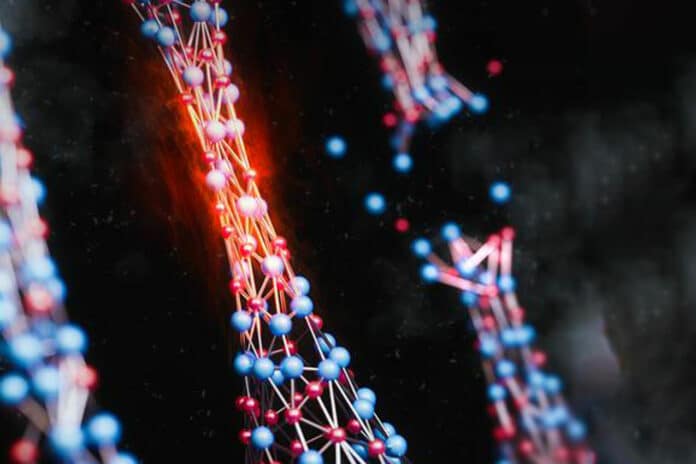Thin-film materials under high tensile pressures have been used for decades to generate highly sensitive mechanical resonators. While significant progress has been made in employing high tensile stress to create low-dissipation automatic sensors, the tensile fracture strength of the resonator materials still limits the effectiveness of even the most effective approach.
In a new study, researchers at Delft University of Technology have unveiled a new ultra-strong material with the potential to impact the world of material science: amorphous silicon carbide (a-SiC). This material exhibits mechanical qualities essential for vibration isolation on a microchip and its remarkable strength. Thus, amorphous silicon carbide is exceptionally well suited for creating susceptible microchip sensors.
It rivals the strength of diamonds and graphene but boasts a yield strength 10 times greater than Kevlar, renowned for its use in bulletproof vests.
Assistant professor Richard Norte said, “To better understand the crucial characteristic of “amorphous,” think of most materials as being made up of atoms arranged in a regular pattern, like an intricately built Lego tower. These are termed “crystalline” materials like for example, a diamond. It has carbon atoms perfectly aligned, contributing to its famed hardness.”
However, atoms in amorphous materials are not arranged consistently, like in a randomly stacked Lego set. However, this randomization only leads to fragility, as one might assume. Amorphous silicon carbide provides proof that strength can arise from such unpredictability. This novel material has a tensile strength of 10 GigaPascals (GPa).
Norte said, “To grasp what this means, imagine trying to stretch a piece of duct tape until it breaks. Now, if you’d want to simulate the tensile stress equivalent to 10 GPa, you’d need to hang about ten medium-sized cars end-to-end off that strip before it breaks.”
To test the tensile strength of this material, the researchers used microchip technology, an inventive approach. They could create high tensile tensions by developing amorphous silicon carbide films on a silicon substrate and suspending them. This was made possible by the nanostrings’ shape.
They carefully monitored the point of breakdown by creating numerous of these structures with progressively higher tensile stresses. This microchip-based method allows future material testing while guaranteeing previously unheard-of precision.
Why are nanostrings being highlighted so much? Nanostrings are the essential components, the basis upon which more complex suspended structures can be built. It is equivalent to exhibiting strength in its most basic form when a nanostring shows high yield strength.
Finally, the scalability of this material is what makes it unique. A single sheet of carbon atoms called graphene is solid, but it is difficult to make in significant amounts. Despite their extreme strength, diamonds are either scarce or very expensive to create. However, wafer-scale production of amorphous silicon carbide allows for enormous sheets of this extraordinarily durable material.
Norte said, “With amorphous silicon carbide’s emergence, we’re poised at the threshold of microchip research brimming with technological possibilities.”
Journal Reference:
- Minxing Xu, Dongil Shin, Paolo M. Sberna, Roald van der Kolk, Andrea Cupertino, Miguel A. Bessa, Richard A. Norte. High-Strength Amorphous Silicon Carbide for Nanomechanics. Advanced Materials. DOI: 10.1002/adma.202306513
